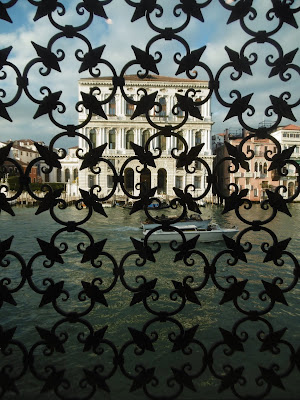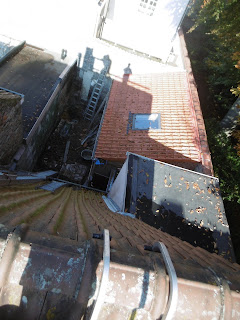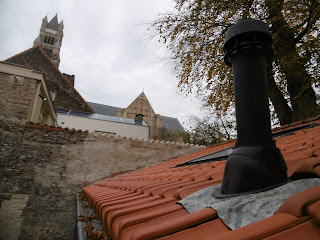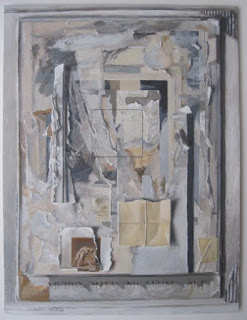My formative years, between the age of 11 and 18, where spent in Lancashire in the North of England in a largely late Victorian Gothic Revival building. We followed a rather monastic daily schedule that included morning mass and night prayers. This pre-computer world included the old classical tradition of naming year levels by the subjects studied at these various stages; middle school 6th, 7th and 8th grade were called, 'underlow', 'low figures' and 'high figures', whilst high school 9th and 10th grade were, 'grammar' and 'syntax' respectively, and 11th and 12th grade 'poetry' and 'rhetoric'. Whilst I endured five years of Latin with only moderate success, I focused on English Literature, Art and Ancient History at 'A' level passing with As, although by that time I was rebellious, disenchanted and disengaged by a system which felt like it was out of touch, at least with my emerging view of reality, and ready to escape to London and art school.
 |
| The Chapel. |
 |
| The South Wing from the Upper Lake. |
In retrospect is it possible to see how in the 1880s such a pile of masonry could have grown as a visual and material embodiment of strongly held identities, values and world views, particularly in Lancashire, which since the reformation had remained staunchly Catholic with significant pockets of resistance in the local recusant gentry and large influxes of Irish poor into cities like Liverpool following the potato famine.
The poems of Gerard Manley Hopkins, (1844-1889) which I studied at this time, remain as vivid individual expressions of feelings and perceptions transformed into art and language of one who lived through these transformations. This one is particularly poignant.
Spring and Fall
to a Young Child
Margaret, are you grieving
Over Goldengrove unleaving?
Leaves, like the things of man, you
With your fresh thoughts care for, can you?
Ah! as the heart grows older
It will come to such sights colder
By and by, nor spare a sigh
Though worlds of wanwood leafmeal lie;
And yet you will weep and know why.
Now no matter, child, the name:
Sorrow's springs are the same.
Nor mouth had, no nor mind, expressed
What héart héard of, ghóst guéssed:
It is the blight man was born for,
It is Margaret you mourn for.
Criticism of the worst excesses of a materialistic, 19th century commercial, industrial, capitalism, crystallize in the writings of John Ruskin, who championed amongst many other things, public libraries and drawing classes for working men, and William Morris, whose socialist utopian vision was expressed in 'News from Nowhere'. The Arts and Crafts movement spreading out from Britain would later influence the Bauhaus. Augustus Pugin's Gothic revival architecture pitches his version of the middle ages against the facades of commercial 'classical' Georgian architecture, and the romantic medievalism and social insight in the paintings of the Pre-Raphealite Brotherhood provided an aesthetic background to John Henry Newman's conversion to Catholicism and The Oxford Movement, which articulated voices of dissent from within the English establishment, with their focus on social reform, spiritual renewal and revival.
 |
| From Pugin's 'Contrasts' published in 1836 |
The demographics of history, economic and social life in the growing cities of the North of England provided a fertile soil for such ideas to grow into. Some of the building's which followed survived only a hundred years into the late 20th century, as in the case of my old school, and are now abandoned and falling into decay and dereliction, awaiting perhaps their own renaissance in a future cycle of regrowth and regeneration?

















































